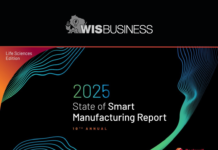With 13.5 million people in the nation unemployed, Minneapolis Fed says Congress needs to act “aggressively and generously” on a second stimulus package like it did with the first — “putting money in the hands of the tens of millions who lost their jobs through no fault of their own.”
Prior to the arrival of COVID-19, the economy was robust: wages were ticking up, more people were joining the workforce and fewer were leaving, according to Neel Kashkari, president of the Federal Reserve Bank of Minneapolis.
The national unemployment rate was 4.4 percent in March, Wisconsin was at 3.1 percent, and it appeared the country was reaching maximum employment.
“Six months earlier, we were not thinking about a pandemic, then COVID hit almost out of the blue,” Kashkari said.
Kashkari, along with Brian Andrew, chief investment officer of Johnson Financial Group, discussed the pandemic’s economic effects in a Wisconsin Manufacturers & Commerce briefing.
“Just to put a finer point on the effects of COVID, the second quarter GDP number, which measures the pace of growth of the U.S. economy, was revised to down negative 31.7 percent,” Andrew said.
On an annual basis, this indicates almost a $2 trillion dollar decline in economic activity during the second quarter, largely a result of the March shutdown, he said.
“What we saw in response to that was pretty tremendous, both fiscally and by the Federal Reserve, to the tune of almost 44 percent of our annual economic activity,” Andrew noted.
Estimating the economy was running at $20 trillion per year, this means $10 trillion in stimulus was put forth by the Federal Reserve and government to offset that decline, he explained. Congress is now wrestling with a second stimulus bill, which has proven much harder to get done.
Both Kashkari and Andrew noted a need for action by legislators. While Wisconsin’s unemployment rate has lowered, the rate at which it is lowering has slowed. After peaking in April at 13.6 percent, the unemployment rate has dropped to 6.2 percent.
While the labor force participation rate has improved, Andrew said it’s important to think about where job availability and skills come from in Wisconsin. He called for policies to “better connect” people’s skill sets with the jobs that are available.
Those jobs are going to exist in recovered economic sectors. Manufacturing, for example, has recovered at a much higher rate, Andrew said. Using Wisconsin as an example he touted 7,700 manufacturers contributing over $60 billion dollars to the state’s economy and employing just under half a million people.
At the lowest point during the pandemic, under 450,000 were employed in the sector — a number starting to climb back, Andrew said. He added that the growth of the manufacturing sector plays an important role in the overall health of the economy due to available, higher-paying jobs averaging $58,000 dollars per year.
“I think we can continue to expect mixed results from an economic perspective, but if you think about the manufacturing renaissance as a result of this capital expenditure improvement, I think we will continue to see improvement in the Wisconsin economy,” Andrew concluded.
Kashkari added that an economic recovery is not about politics — but confidence.
“If we want to have a robust economy, we need to get control of the virus,” he said. Kashkari noted that good news is on the horizon with progress being made on vaccines and Congress coming together to try to provide support to the national economy.
“Hopefully the vaccine will be effective and we can all have confidence to go back to restaurants, back to school, back to the movies, get back on planes and get back into hotels,” he concluded.
-By Gavin Schopf
WisBusiness.com






